Capital Heyuan – Pinggu Rental Housing Community Library
y.ad studio completed the Pinggu Rental Housing Community Library at the Capital Heyuan in Beijing, China.
The winning schematic design for a community library by Shanghai-based y.ad studio has completed construction. The library is in building 12 of the rental housing complex on the west side of the collective land of Baigezhuang Village, Daxingzhuang Town, Pinggu District, Beijing. By defeating five well-known Chinese design firms, y.ad studio won the competition and worked on the project design.
Positioned in the southeast corner of the community, the library is conveniently located near the entrance of the community life service center, with a spacious 50m wide landscape green space to its south. Given its remote location in the suburban outskirts of Beijing, the area primarily serves residential purposes, resulting in limited and basic amenities. Therefore, the project was intended to create internal commercial and public spaces that cater to the community, providing essential life services and convenience. The library will become a crucial supporting facility for the rental housing project on the collectively-owned land.
Community-oriented
The design team has envisioned three key goals for the library upon its completion.Firstly, it aims to provide the residents with enhanced life services, fostering their engagement in the construction process and transforming the library into a cultural symbol of the community.
Secondly, it seeks to attract and engage people from the surrounding areas, becoming a desirable gathering place and potentially influencing their cultural knowledge and literacy.
Lastly, based on the project location in the city, the library strives to become a destination of interest for both local residents and visitors to Pinggu District, encouraging individuals who share similar values to come together and reshape their social interactions and lifestyles.
The library strives to be an inviting space that focuses on the community and stays true to its original purpose.
Functional reorganization
The library is a three-story building with a gross floor area of 1,286.25㎡, in which the first floor occupies 524.01㎡, the second floor occupies 400.85㎡, and the third floor occupies 361.39㎡. The spatial functions are carefully planned and designed to cater to functional and sentimental needs.It accommodates a public leisure zone including a community living room, light meal and coffee, temporary exhibitions, and a screening room, and offers a reading zone including self-study room, creator discussion area, public reading area, and e-reading area. Additionally, the library has a designated children’s education zone that includes children’s reading, family library, and children’s screening room.
Some spaces have been set aside for potential sentimental design, fostering a sense of community, and providing opportunities for residents to participate in cultural displays, activities, and interactions.
The concept behind the first floor was to create a “community living room” that serves as a hub for community socializing. It goes beyond just being a reading room and encompasses a variety of activities such as exhibitions, coffee-sipping, and events that encourage communication and interaction among people.
The second floor has more space for reading, self-study, and work, aiming to provide a space that encourages young people to read, pursue self-study, communicate, and engage in meaningful conversations.
The third floor offers a wide range of activities for families and parent-child bonding, allowing children to read and play with their parents.
Spatial theme
A building that incorporates the play of light and shadow can evoke a sense of soulfulness. For those returning home late at night, the presence of light can offer a nourishing experience for the soul.After analysis of the architectural space, the design team utilized the 14.9-meter-high vertical glass curtain wall that is transparent over through the three floors in the lobby facing the square entrance to create a visual point of interest, drawing the attention of passersby.
Additionally, the south-facing glass curtain wall, overlooking the 50-meter landscape belt and square, blurs the boundaries between indoor and outdoor spaces and introduces the outdoor landscape into the interior. Outdoor seating areas were designed to provide a space for leisure and communication. Besides, the long skylight brings daylight spanning three stories high and illuminates the atrium with a bright and transparent glow. This design approach successfully guided light and shadow into the interior, creating a unique spatial atmosphere.
Design: y.ad studio
Photography: SCHRAN

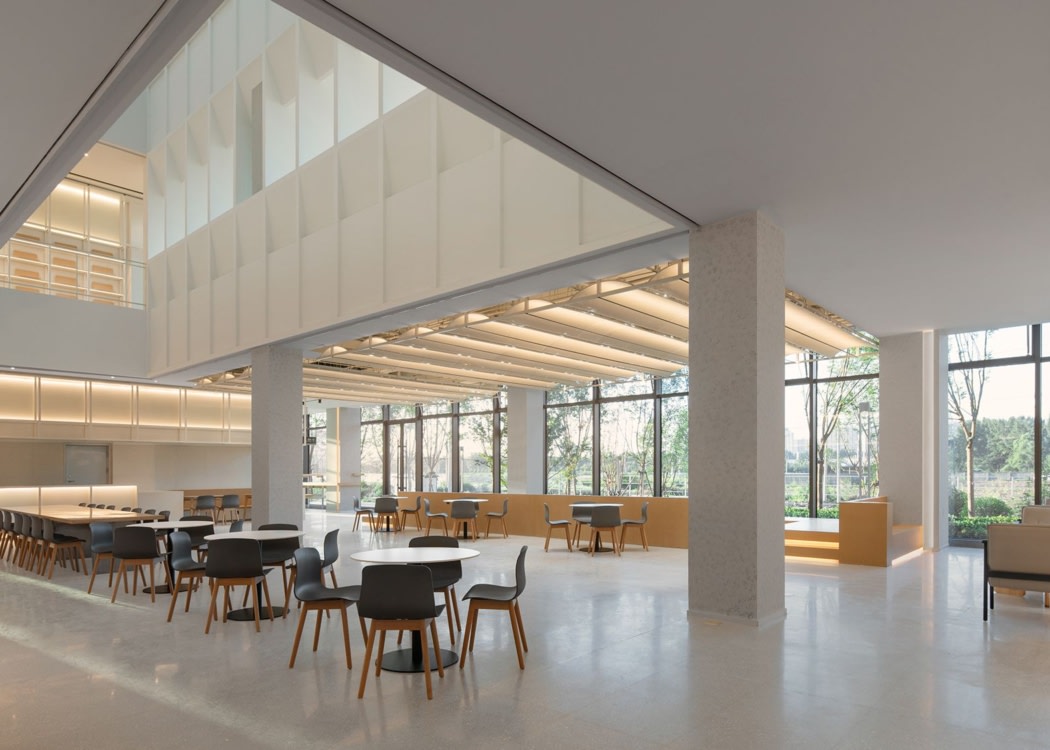
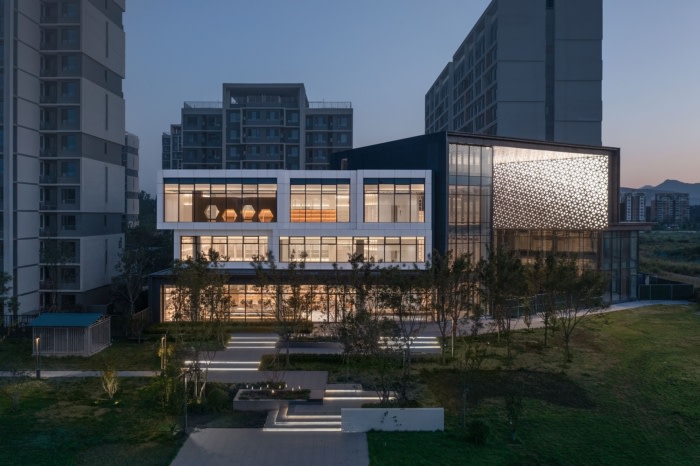
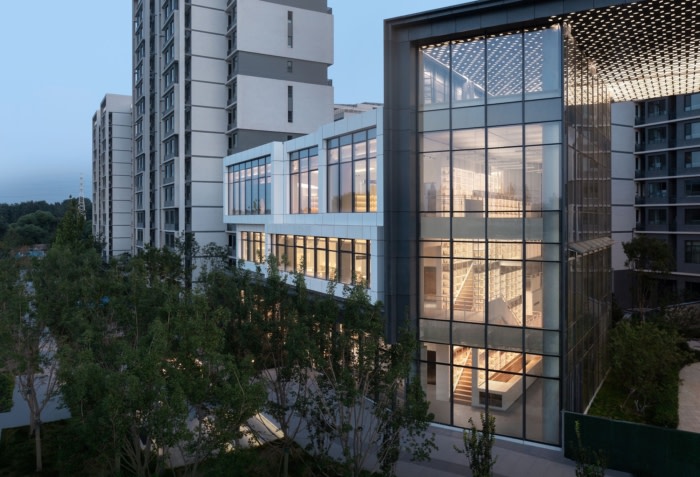
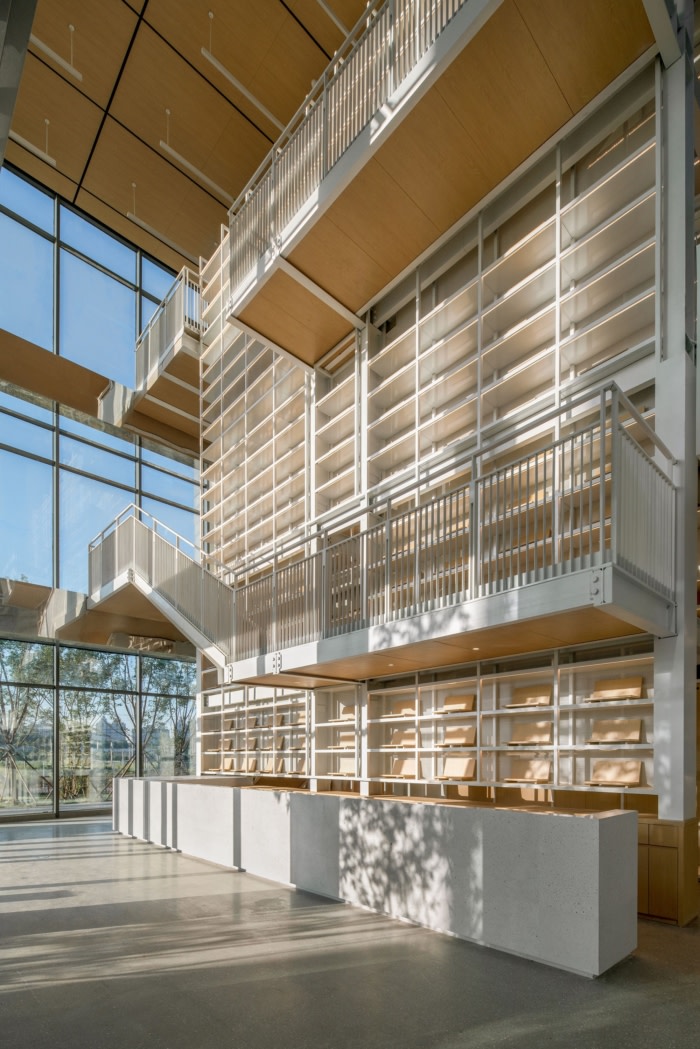
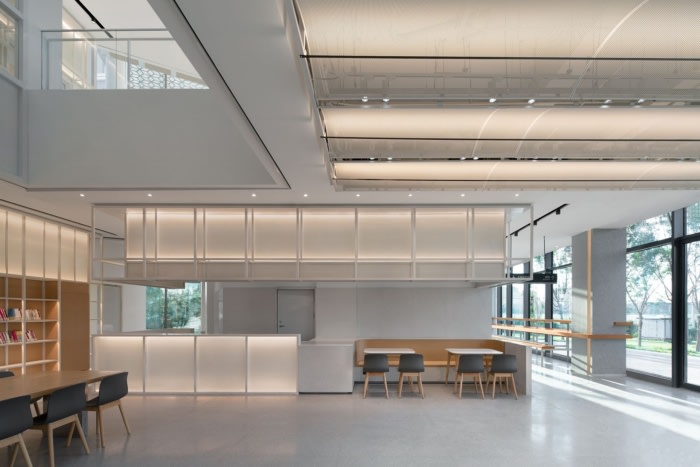
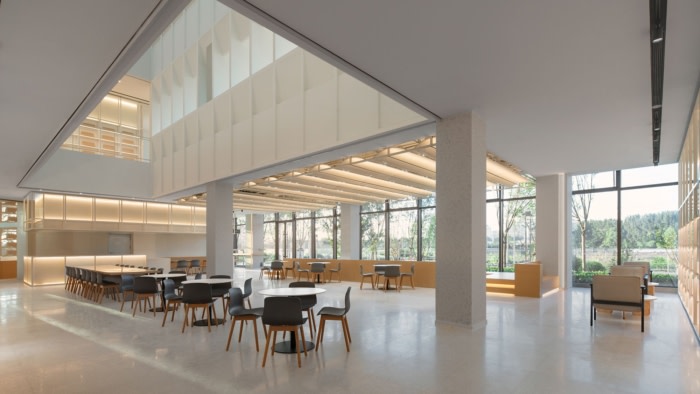
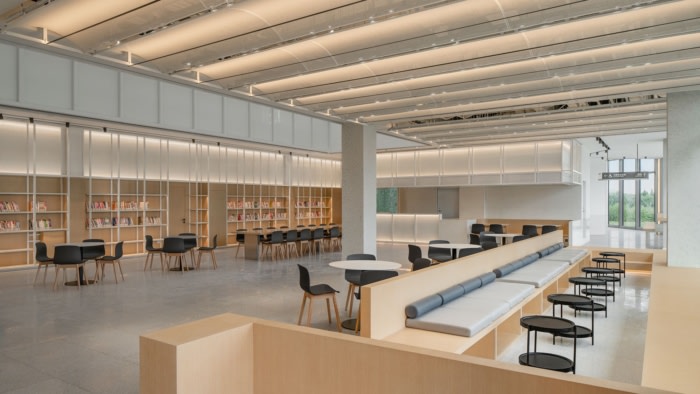
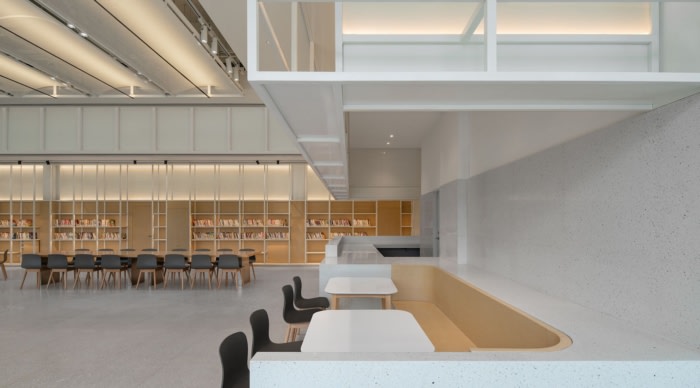
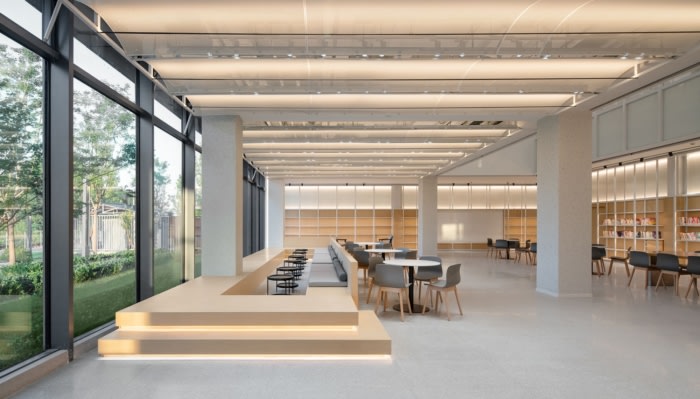

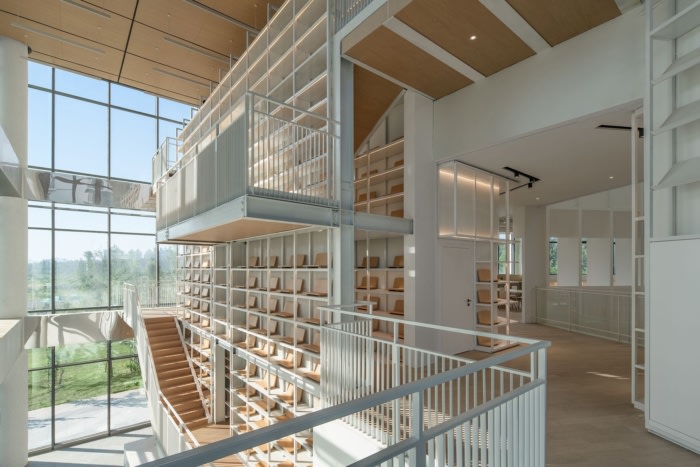

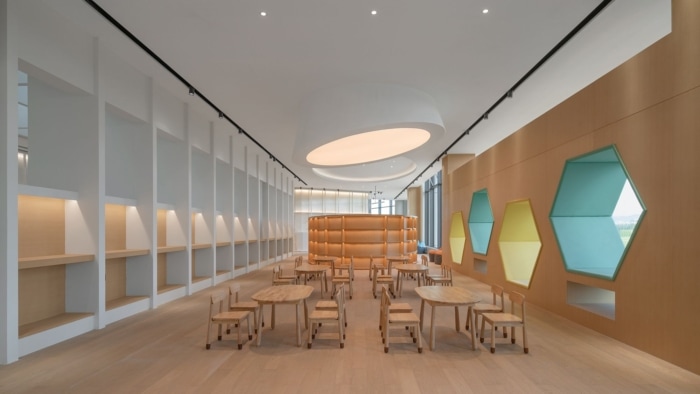
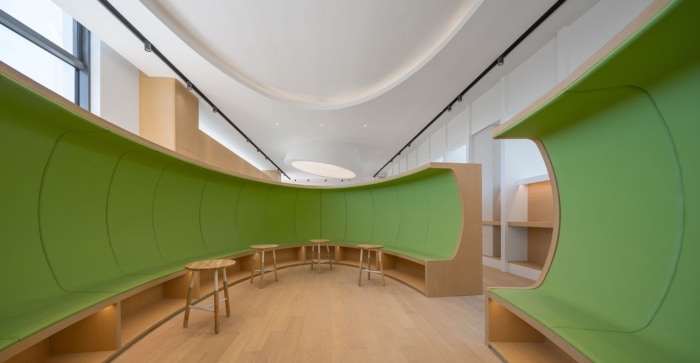
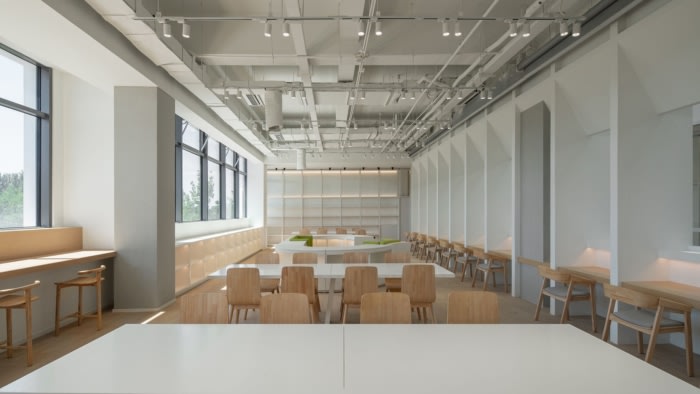




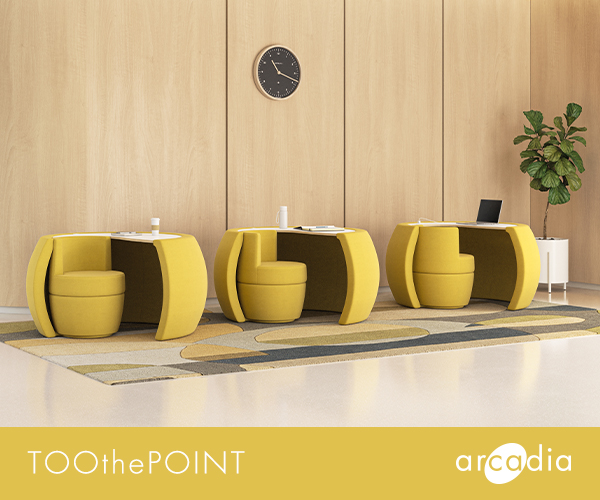
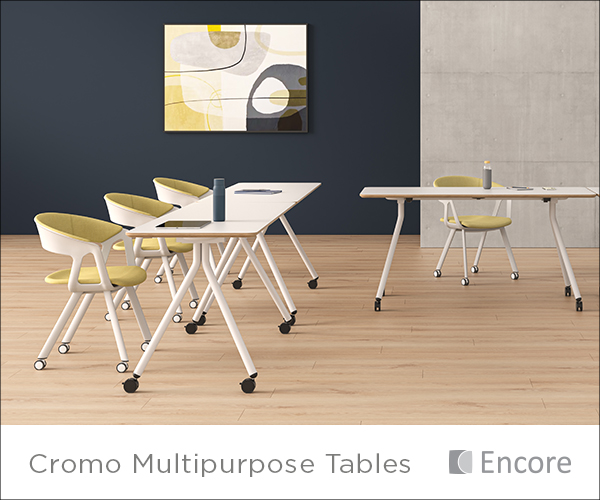




Now editing content for LinkedIn.